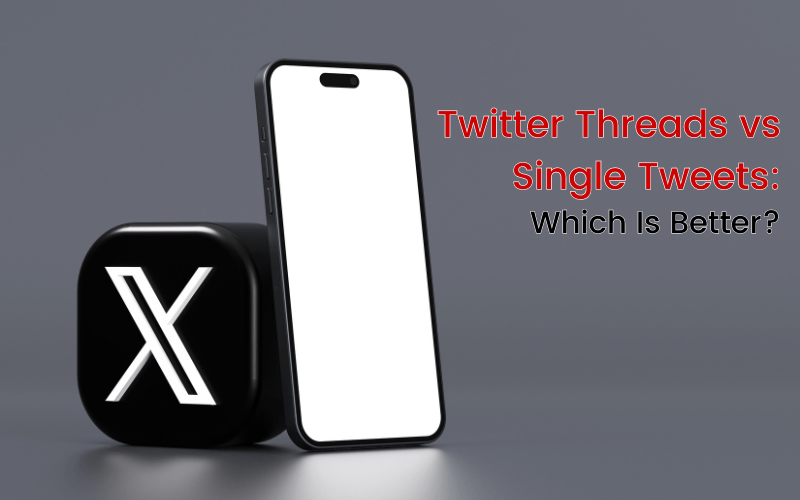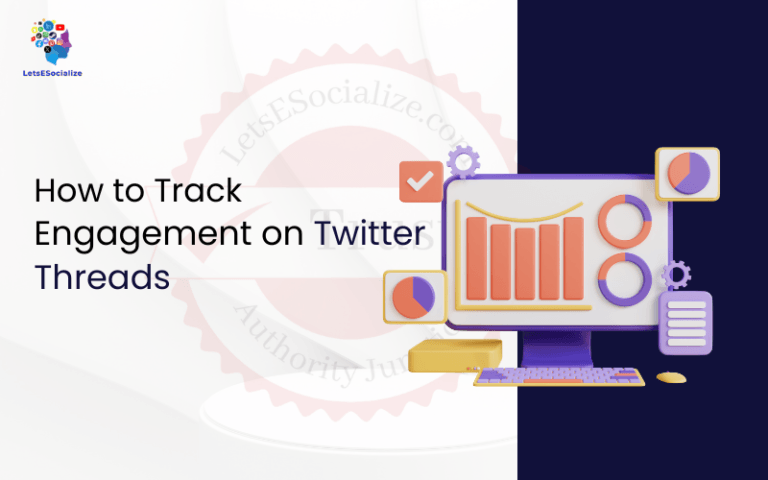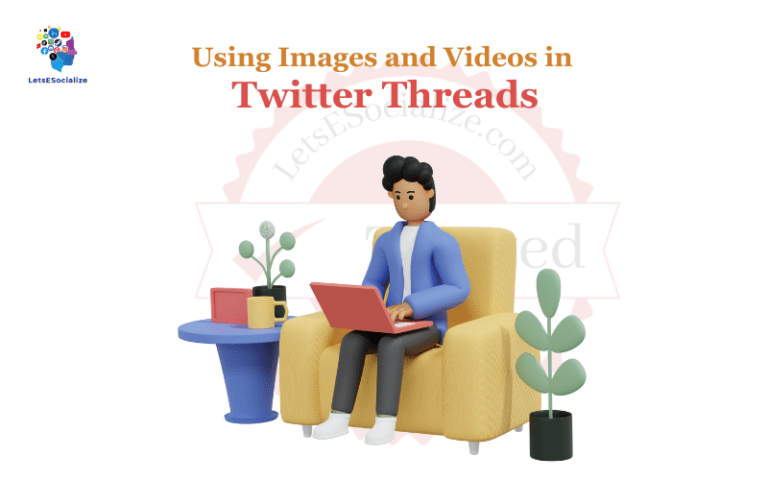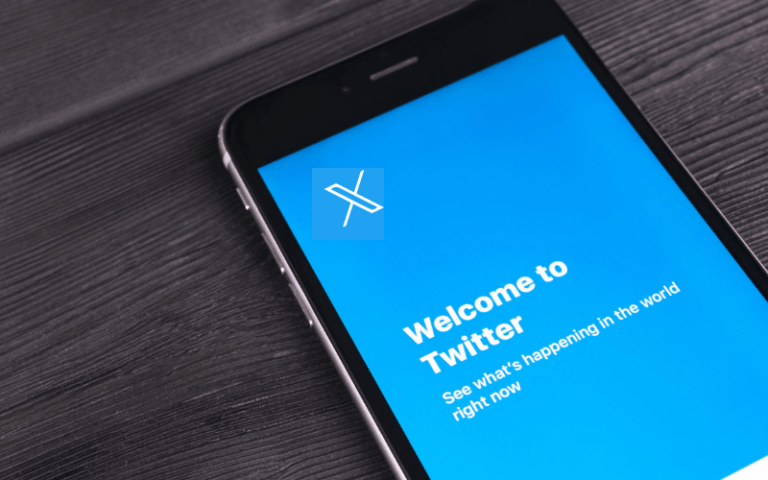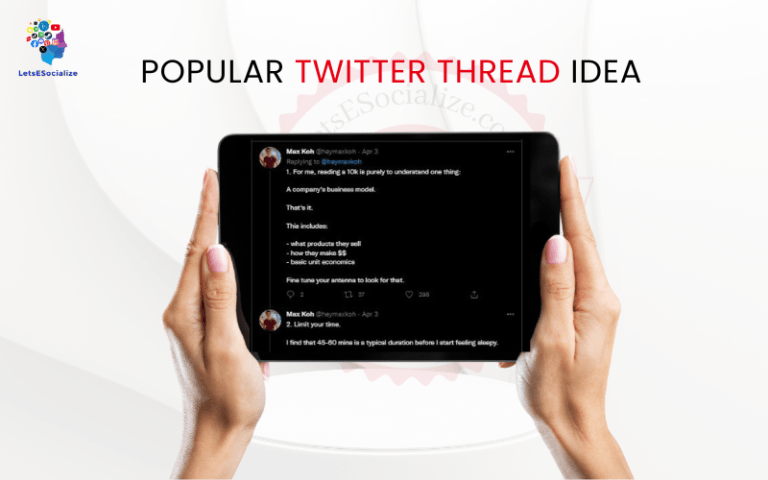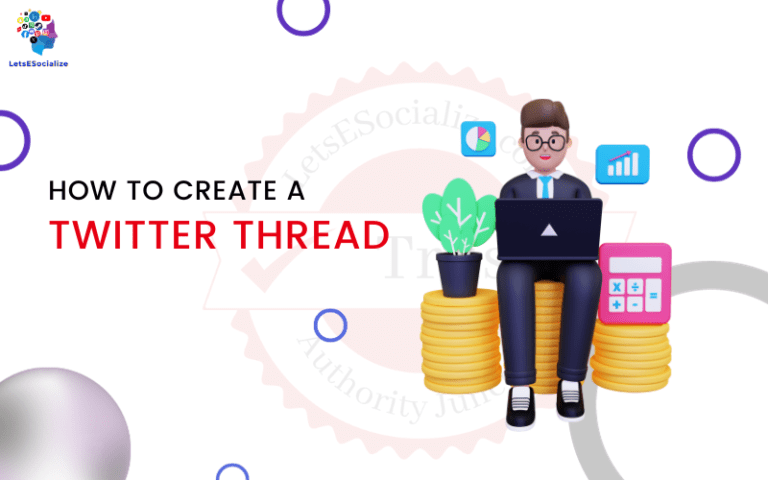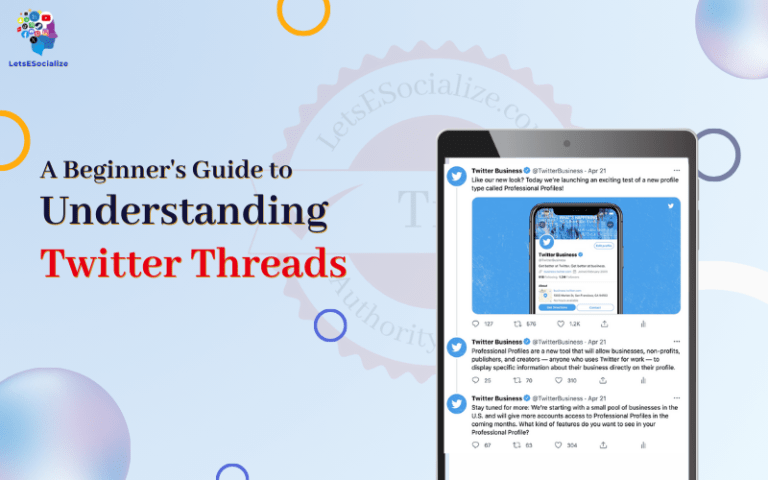Twitter’s threaded tweets feature allows users to connect multiple posts into one extended narrative. But is threading tweets the best strategy, or should you tweet individually? In this comprehensive guide, we’ll break down the pros, cons, and best practices for utilizing Threads vs Single Tweets normally.
Table of Contents
Character Limits: Threads Unlock More Space
- Single tweets are capped at 280 characters. This brevity forces conciseness but also limits how much you can say.
- Threads let you extend ideas and stories over multiple tweets, circumventing the character constraints.
- In a thread, each tweet can still be 280 characters. But combined, your total message length is exponentially larger.
- For long-form content and detailed anecdotes, threads allow nuance and depth impossible in a single tweet.
Formatting and Structure
- Single tweets appear as isolated, standalone snippets in feeds rather than connected passages.
- Threads format multiple tweets together into an integrated, cohesive narrative flow.
- Readers can scroll through a thread as one unified piece of content, ideal for longer stories.
- Writers can use line breaks, bullet points, headers, and other formatting in threads to enhance structure.
Also read: How to Create a Twitter Thread
Engagement and Sharing
- With threads, likes/retweets apply to the entire thread instead of individual tweets. This bundles engagement.
- Longer threaded narratives tend to be more shareable than one-off blurbs. More substance equates to higher sharing value.
- However, single viral tweets can organically reach bigger audiences outside of followers who voluntarily click into threads.
- Strategically threading only very long or detailed ideas while tweeting normally; otherwise, it may optimize overall sharing.
Discoverability and navigation
- Scroll-long threads can be difficult to digest or jump into mid-thread compared to concise single tweets.
- Twitter’s algorithm surfaces individual viral tweets more prominently in feeds and searches than in full threads.
- But threads stand out visually from regular tweets in feeds, catching the eye as distinct content units.
- New tweet preview cards on threads also aid discoverability by summarizing long threads for easier browsing.
User Experience and Accessibility
- Links, hashtags, and media work seamlessly in threaded tweets without compromising UX.
- However, threads break screen readers used by visually impaired users. Individual tweets maintain accessibility.
- Long threads may frustrate users who want bite-sized content. But scrolling threads can also pull users into engaging with longer content.
- Strong headlines and preview summaries optimize UX and scanning by flagging the thread topic upfront.
Analytics and Measurement
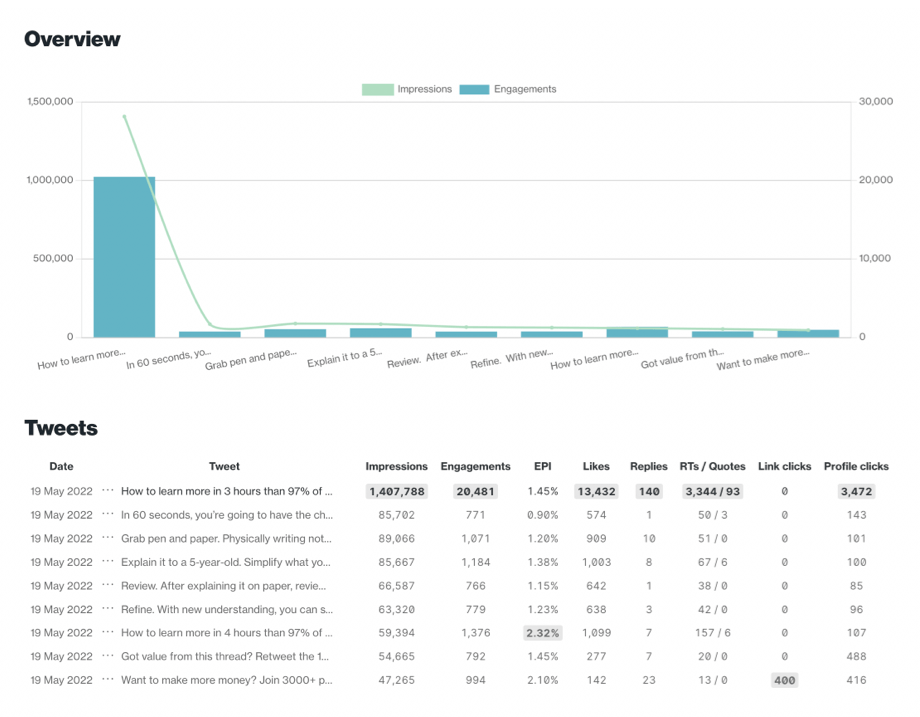
- Twitter Analytics offers metrics for threads: Total impressions, retweets, likes, etc.
- But tweet-level analytics still provide useful granular data on which individual tweets in a thread perform best.
- Tools like Thread Reader App unwrap threads into article pages, tracking additional engagement metrics beyond Twitter.
- Keyword and hashtag usage can be measured for impact in driving engagement within threaded narratives.
Recent Developments
Here are some of the latest updates around Twitter threads and individual tweets:
- Threader App and other tools make curating and reading long threads easier.
- Preview cards now auto-generate for long threads to improve visibility in feeds. Users can customize them.
- Edge-to-edge media and 4K video now display in threads, enhancing multimedia capabilities.
- Survey compositions study optimal thread length, with 2-5 tweets emerging as the sweet spot.
- Quote retweets were integrated natively into threads to foster participation and discussion off initial tweets.
- Analytics dashboards rolled out advanced metrics for threads: Top Followers, Tweet impressions, etc.
- AP Stylebook endorsed threads as an acceptable format for journalists and media outlets on Twitter.
- Character limits increased to 4,000 for Direct Messages, expanding threads for long-form use in private chats.
Ready to decide whether threading or tweeting makes sense for your content and goals? Keep these key factors in mind:
Best Practices: Threads vs. Single Tweets
Based on the comparative strengths and weaknesses of each format, here are some best practices:
When to Use Threads
- You have a detailed story, anecdote, essay, or commentary exceeding 280 characters.
- You want to create an informational resource with sections and structure.
- Your content requires multimedia like images, videos, gifs, or documents to supplement the narrative.
- You seek to maximize engagement, clicks, and sharing with long-form, compelling content.
When Single Tweets Work Better
- You want to share a quick thought, update, or observation under 280 characters.
- Your goal is maximum visibility and organic amplification to new users.
- You are live-tweeting an event rapidly in real time.
- Your content is easily digestible as a standalone snippet.
- You are tweeting across multiple different topics.
Overall Best Practices
- Use a mix of threads and individual tweets for variety and optimization.
- Keep threads focused around 2-5 tweets for scannability.
- Add preview summary cards to your longer threads.
- Promote key threads individually as teasers to build engagement.
- Analyze tweet and thread data to compare performance and refine approaches over time.
With the right strategy, both threads and individual tweets can complement each other to maximize your engagement and growth on Twitter! Let me know if you need any other Twitter tips or advice.

